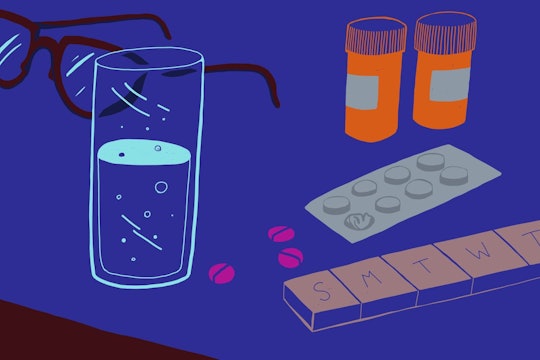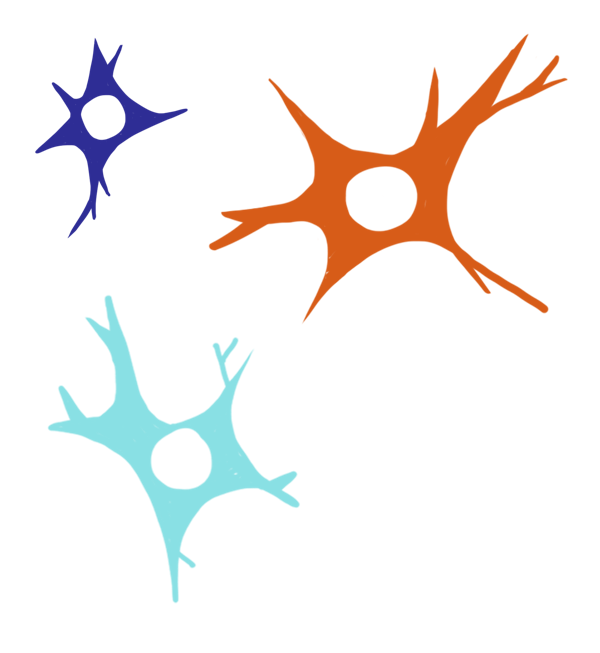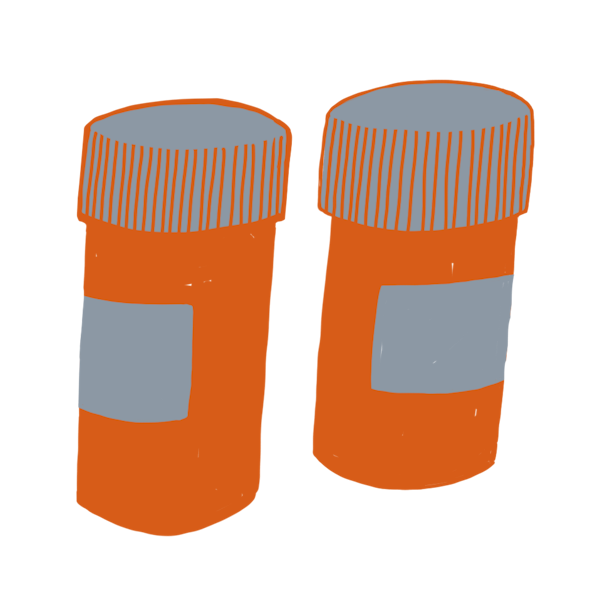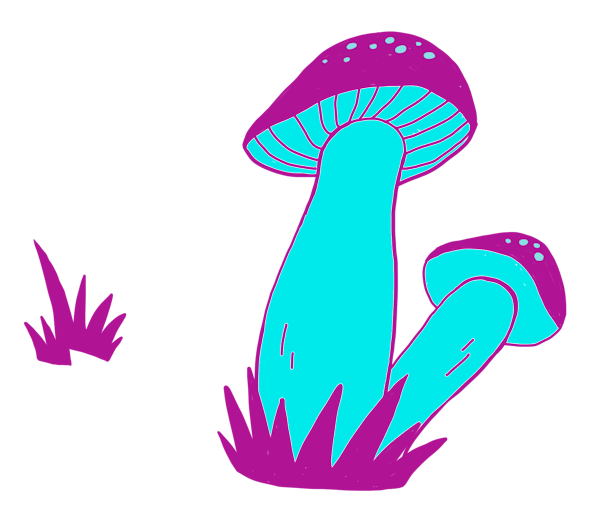Chapter 2
Trip to the doctor

How do psychedelics affect the brain?
Psychedelics most often affect the brain by binding to serotonin receptors, thereby disrupting our tightly orchestrated concerto of brain activity. They have a myriad of downstream effects in various brain pathways – some combination of which creates their behavioral effects.
Psychedelics are defined by their effect on specific receptors in the brain, as well as their ability to induce altered states of consciousness in people who take them. This altered state includes broad changes in how one perceives the world, from distortions in sights and sounds to feelings of spiritual enlightenment. For their ability to open deep recesses of the mind, psychedelics have been touted as "the microscope of psychiatry" capable of "personality transformation and consciousness evolution."
But are these drugs really such a psychiatric panacea? To address this question we first need to better understand how psychedelics affect the brain's neural circuitry, the same components which are too often damaged by mental illnesses.

The brain is constructed of billions of interconnected brain cells, or neurons, which signal to each other both electrically and chemically. Each cell can transmit information by sending electrical signals from one end of the cell to the other cell. Unlike the electrical wiring in our homes, however, neurons aren't physically connected to each other. Between each cell there are minuscule gaps called synapses. In order to bridge these synapses and communicate with its neighbors, neurons release chemical signals into the gap which pass information to the next cell in line.
This chemical signaling system is comprised of neurotransmitters you may have heard of, such as dopamine or serotonin, being released from the "sending" neuron, and then binding to specific receptors on the "receiving" neuron. Each neuron releases a different neurotransmitter, which fits into a receptors perfectly like a lock into a key, enabling many trillions of these electrochemical handshakes to occur simultaneously in the crowded confines of our brains. The release of neurotransmitters onto many varieties of sensitive receptors allows each signal to be fine-tuned and manipulated as it passes from cell to cell.
All psychoactive drugs, those substances that change perception, mood, and consciousness, affect neurotransmitter signaling in one way or another. Cocaine blocks the protein whose job it is to haul dopamine from the synapses, causing a build-up of the neurotransmitter and increased firing of reward cells. Opioids mimic a different natural neurotransmitter, endorphins — the ones that give you a runner’s high — by blocking pain perception. People become addicted to these drugs because, over time, the brain adjusts to these altered chemical levels and becomes dependent on them, resulting in significant physiological and psychological symptoms called withdrawal when the substances are removed.

Classical psychedelics — LSD and psilocybin, as well as new “designer drugs” — are generally chemically similar to the neurotransmitter serotonin, and bind to a specific type of the serotonin receptor called 5-HT2A. In fact, these external molecules bind the receptor more tightly even than its partner we actually produce in our bodies. As a result, the drugs disrupt the normal signaling pathways in which these receptors play a role in mediating proper communication between neurons. Masquerading as serotonin, LSD or psilocybin bind tightly to the 5-HT2A receptor in synapses primarily in the prefrontal and visual cortices, and cause nearby cell populations to speed up and slow down their usually regular firing. Like an out-of-tune violin playing in the front row, this disruption throws off the entire concerto of brain activity.
Other hallucinogens disrupt different pathways within the brain’s chemical signaling network. Ketamine and similar dissociatives bind to and block the channels of NMDA receptors, plugging the hole by which these receptors strengthen synaptic connections and enable learning and memory formation. Like LSD, MDMA is a chemical mimic, taken up by cells which mistake its structure for serotonin or dopamine. Within these cells, MDMA causes the cell to release more of their neurotransmitters, and then blocks the proteins which normally clear the synapse. This results in significantly more serotonin and dopamine flooding across the brain bringing sensations of euphoria and intimacy.
What research and treatments are on the horizon?
Research on psychedelics has shown promise in treating PTSD, depression, anxiety, OCD, and drug addiction. Still, most of these therapeutic methods are not used in practice, and more large scale clinical trials are needed.
After a 25-year hiatus on human psychedelic research, in the 1990s a scientific psychedelic revival began. Since then, scientists from Switzerland, Germany, and the United States have conducted investigative studies, discovering a slew of information regarding psychedelics' potential as therapeutic tools. Here are some of the different compounds that are showing treatment promise.
LSD
Early research conducted from the 1950-70s suggested that LSD may have therapeutic effects similar to antidepressants and anti-anxiety medication. Today a myriad of studies are corroborating the evidence for the potential of LSD in treating certain mental health problems.
In light of such results, medical professionals in countries such as Switzerland now have limited use of LSD-assisted psychotherapy for benefits in patients with drug and alcohol addiction, depression, and those with terminal illnesses. Patients generally undergo psychotherapy for a couple of months, and then receive two doses of LSD, four to six weeks apart — the ideal number of doses and duration are still being tested.
Patients with terminal or life-threatening illnesses tend to suffer from profound cases of anxiety, and LSD has shown promising results, like decreased anxiety levels, and an increase in the quality of life with no adverse reactions to the drug. Since 2014, the Swiss Office for Public Health has given permission for 10 patients who suffer from anxiety associated with life-threatening illnesses to receive LSD-assisted psychotherapy. (In the United States, no patients have currently been approved to use LSD for this purpose.)
Psilocybin

There have been US-based PTSD studies using another naturally occurring hallucinogen, psilocybin. Accumulating evidence suggests that psilocybin, like LSD, can also be safely used to accompany therapy in treating end-of-life anxiety in diseases such as cancer by acting like an influx of serotonin in the brain. Various studies are further shaping the possibility that psilocybin can help mitigate treatment-resistant depression, alcohol, and tobacco addiction.
A 2006 study done in Arizona additionally showed that, when psilocybin was given once a week for a month at escalating doses (non-hallucinogenic to hallucinogenic), there was a marked reduction in OCD symptoms that lasted for 24 hours. This is a significant finding because all nine patients were previously not responsive to any treatment. These findings echo pre-ban findings in the 1960s, where a study showed that psilocybin could be effective in treating OCD.
Ketamine
Ketamine isn't exactly considered a psychedelic; scientists usually classify it as a "dissociative anesthetic." It's typically used to put animals (and humans) under during surgery, but it can also produce psychedelic effects, like altered perception and feelings of detachment.
In the 1990s, several preclinical studies found that many antidepressants work by reducing activity of proteins that recognize glutamate, the principle neurotransmitter in mammals' brains. These findings suggested that ketamine could be a potential antidepressant, because it reduces activity of glutamate-related proteins. Initial findings supported this claim, but most of the human studies were performed with a small number of participants.
However, a 2013 study on 73 people with treatment-resistant major depression furthered the evidence for ketamine as an antidepressant. Half of the individuals were given the placebo midazolam, an anesthetic that has similar effects but is not thought to be an anti-depressant, while the rest received ketamine. The group who were administered one dose of ketamine had significantly reduced depression symptoms after 24 hours, and lingering effects lasted a week.
The fast-acting nature of ketamine could be particularly beneficial for patients suffering from major depression with suicidal ideations.Studies have found that a single ketamine infusion can reduce suicidal thoughts within 24 hours. Most conventional antidepressants can't reduce mortality risk, because they take a long time to kick in, usually taking two to three weeks to take effect. One reason for this could be because ketamine treatment is usually administered intravenously, which increases the speed at which the drug acts on the brain, while most depression medications are taken orally. Preliminary evidence suggests that depression medication in a similar manner could also fasten their actions on the nervous system.
Ketamine is also being studied as a potential treatment for opioid addiction. Using one type of drug to treat addiction to another drug might seem like a counterproductive idea. But here’s why it might work: withdrawal from any addiction is difficult — withdrawal from heroin, for example, can include nausea, diarrhea, vomiting, depression, and major drug cravings. This is an important distinction because drugs such as heroin are more addictive, which is synonymous with abuse of the drug. However, chemicals like methadone are strictly prescribed to manage the debilitating and painful symptoms of withdrawal. That said, patients can still become dependent on these prescription medications.
Ketamine's anesthetic properties can help reduce symptoms as people wean off painkillers, and could therefore be useful for managing opioid withdrawal. In a 2002 clinical trial, 70 heroin addicts received one low or high dose of ketamine after 10 hours of psychotherapy. Follow-up studies on each patient over the next two years revealed that a significant amount of them had a higher rate of abstinence, reduced craving, and a positive emotional attitude. Since ketamine does have the potential to become addictive itself, it is integral that studies assess proper dose regimens and take necessary precautions. Still, that risk is less than that of addiction to methadone, one of the main standard medications dispensed daily to addicts in recovery.
Ayahuasca
Quechuan people in South America gave the term ayahuasca to Banisteriopsis caapi, long-stemmed vines endemic to the Amazon and Orinoco river basins. The ayahuasca brew (water infused with stems of B. caapi and other ingredients) has played a pivotal role in ancient shamanic rituals and rites of passages within indigenous communities in northwestern South America for centuries.
In the western world, there is an increase in the use of ayahuasca, mainly due to its “mystical” and visionary effects, usually, though not always, thought to be caused by its active ingredient DMT. Though the research is somewhat sparse, anecdotal evidence suggest that some find the experience therapeutic. In 2014, a widowed teacher, who drank Ayahuasca with other Brooklynites looking to cleanse, went on to say, “I find ayahuasca to be a purifying psychological journey.”
With the recent renewed interest in psychedelic research, there have been new studies examining the therapeutic potential of ayahuasca. Two studies performed in 2015 and 2016 found that a single dose of ayahuasca can rapidly reduce depressive symptoms in treatment-resistant patients, with remarkable improvement in symptoms seen for up to three weeks. The only adverse effect, seen in 47 percent of the patients, was vomiting.
MDMA
Back in the 1970s, before the drug was deemed illegal, MDMA (the active ingredient in ecstasy) was used to enhance the effects of psychotherapy, like during couples therapy or spiritual awakening exercises. More recently, there's been a resurgence of clinical trials on MDMA-assisted psychotherapy. It is perhaps the single best example of the need for relaxed regulations for potentially beneficial uses of psychedelic substances.
Most famously, MDMA has the ability to reduce PTSD-related symptoms. Studies performed in 2012, 2013, and 2018 show that patients with severe and treatment-resistant PTSD who receive three psychotherapy sessions accompanied by three doses of MDMA, and extended psychotherapy thereafter, have significantly reduced negative symptoms, with effects lasting over two months. Results have been so striking that the FDA approved MDMA as a “breakthrough therapy” for PTSD in 2017. Preliminary clinical trials started in 2012, and the final round of trials are currently underway.
Scientists think that MDMA helps PTSD patients feel less afraid when they recall past traumatic events because it triggers release of dopamine, serotonin, and other neurotransmitters associated with positive emotions. In MDMA-assisted psychotherapy, patients are given MDMA and asked to recall past experiences. Instead of the typical rush of fear, the drug helps them feel positive emotions. Over time, positive associations with these memories outweigh the previous traumatic associations. This could have tremendous impact in the group that are affected by PTSD the hardest: soldiers. General Loree Sutton, who was the highest ranking psychiatrist in the US army until 2010, encouraged the use of MDMA as a potential treatment option, saying, "If this is something that could really save lives, we need to run and not walk toward it. We need to follow the data.”